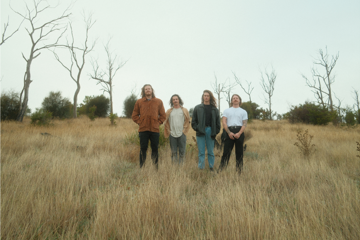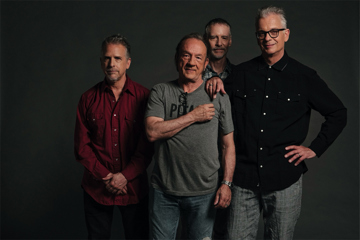Have Sex To Rhye's Music, But Please Just Don't Tell Him The Details Of What You Did
Mike Milosh, the Canadian alternative R&B star behind the music of Rhye, chats with Anthony Carew about the joy of playing instruments again, his globe-trotting past and why people love gettin' it on to his albums.

Mike Milosh spends a lot of time on social media, but not in the guise of self-promotion, or the standard mode of online voyeurism. Instead, the 43-year-old Canadian — who records airy, androgynous, delicate R&B ballads under the name Rhye — spends “probably at least 45 minutes a day” just responding to the “hundreds” of listeners who write to him. “People tell me these very intimate things,” Milosh offers. “Not sexual, just about the things — a death in the family, a breakup, a memory — that the music has helped them get through. People have played this music at engagements, at weddings, during childbirth. I get a lot of baby pictures.”
But, well, sometimes they’re just sexual, too. Given Rhye’s quiet-storm slow-jams are most often compared to Sade, it’s no surprise that people also tell Milosh they have sex to his music. “Oh, yeah, all the time,” he chuckles. “But, people are fairly tasteful with me. It’s rarely gratuitous or graphic or obscene. People use a language that’s very respectful; they’ll tell me that they had a ‘beautiful, magical evening with someone they’re in love with’. I probably wouldn’t find it as nice if they were getting really into these gnarly descriptions of exactly what they did.”
Rhye is a project born “somewhere in the sky between Berlin and Copenhagen”. Milosh, himself, was born in Toronto and grew up playing in both punk bands and the school band. In his 20s, he made music on his laptop while living in Canada, Thailand, Holland, Germany; releasing three solo LPs, as Milosh, between 2004 and 2008. In 2010, when living in Berlin, he flew to Denmark to record a handful of songs with Robin Hannibal of Quadron. It was the genesis moment for Rhye, but they didn’t officially become a thing until two years later when both Milosh and Hannibal had moved to Los Angeles.
With his solo work, Milosh had felt the empowerment of recording himself and releasing things digitally; the product of “a phase where everyone was so excited by what you could achieve with a laptop, a DAW like Logic or Ableton or Pro-Tools, a couple of software synthesisers, and a microphone”. Having “been there and done that”, his goal for Rhye was to make music more about natural acoustics.
"And making a collage, that’s not what I’m interested in. I’m interested in mixing the paint myself, putting it on the canvas.”
“I wanted to not be so computer-based. I wanted to not be using software so much. I wanted to be playing instruments again,” Milosh offers. “All the music I like comes from that world. ’70s stuff like Pink Floyd, Jimi Hendrix, Fleetwood Mac. Even the stuff I listen to from now, it’s stuff like Max Richter and Ólafur Arnalds, which is mostly piano-based. I have nothing against people using electronic elements, it’s just that there’s so many people using beats that someone else has manufactured. When you’re using presets, it’s only ever like you’re cutting and pasting. And making a collage, that’s not what I’m interested in. I’m interested in mixing the paint myself, putting it on the canvas.”
Don't miss a beat with our FREE daily newsletter
After the debut Rhye LP, 2013’s Woman, Milosh wanted to push this idea further. So, 2018’s Blood, made after Hannibal left the project, featured real pianos and real drums instead of MIDI or programmed elements; Milosh hoping to have his “fingerprint in every element of the music, where it’s coming from [him] as a person”.
This personal nature — Blood features his current girlfriend, Geneviève Medow Jenkins on the cover — is what leads listeners to write to Milosh in their masses. But it also means that the ‘hook’ is, simply: “‘Hey, here’s Rhye, it’s this person Mike Milosh, he puts music out’,” Milosh says. “When I talk to the people around me, from my managers to my record labels to the PR agents, we’re always trying to work out: ‘What’s the narrative? What’s the image?’ But, the reality is, I’m not a pop star. I’m not a commodity. The music isn’t one part of a conceptual campaign. I shoot all the artwork for it, the photography, but that’s not a construct. I’m not strategising with consultants when I’m making these decisions. I’m just a person who makes music. And, hopefully, the music can speak for itself.”







